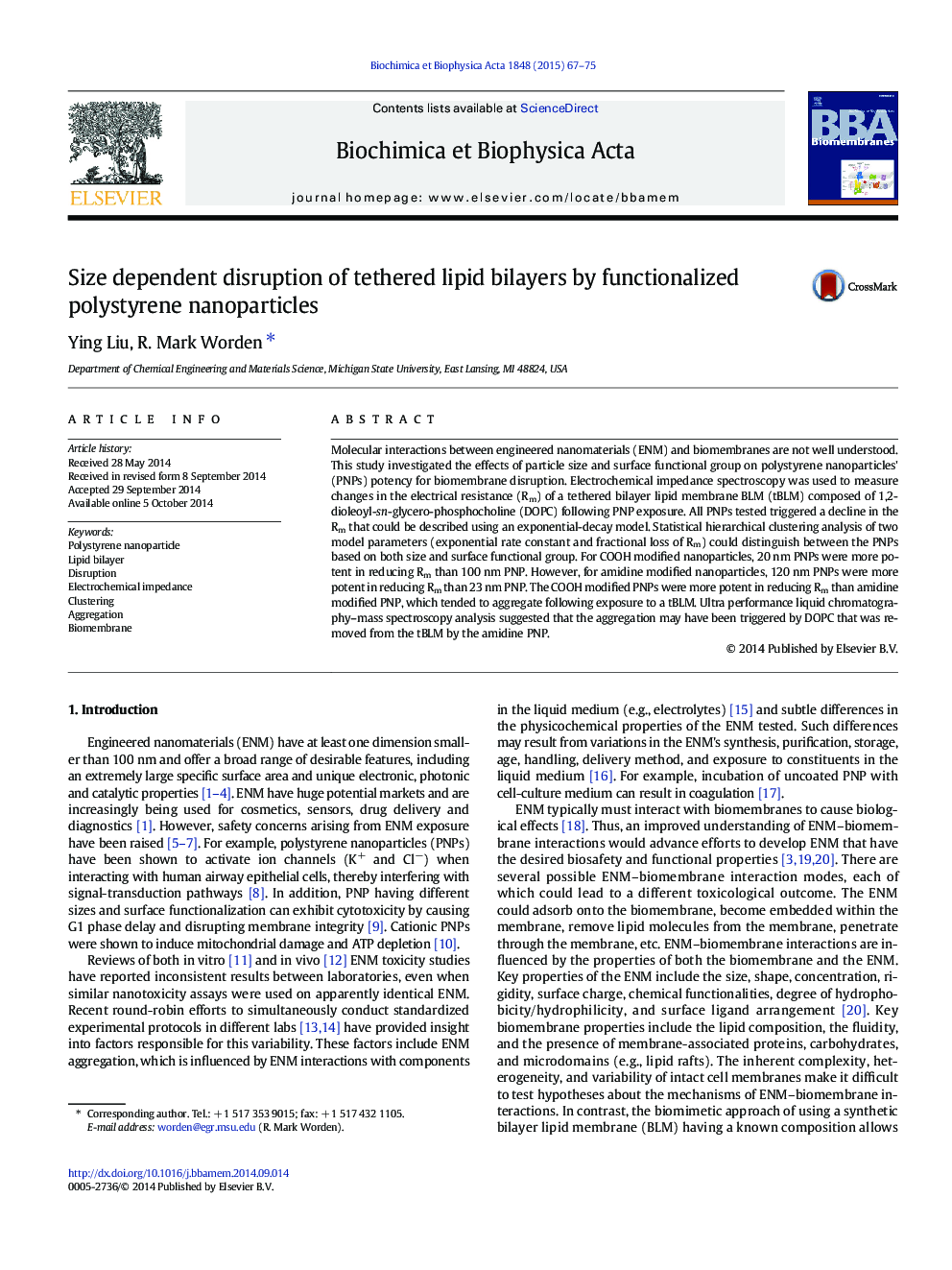| Article ID | Journal | Published Year | Pages | File Type |
|---|---|---|---|---|
| 1944133 | Biochimica et Biophysica Acta (BBA) - Biomembranes | 2015 | 9 Pages |
•Polystyrene nanoparticles reduced electrical resistance of tethered lipid bilayers.•Reduction in bilayers' electrical resistance followed an exponential decay model.•Hierarchical clustering distinguished nanoparticles by size and surface group.•Phospholipid removal from tethered bilayers triggered nanoparticle aggregation.
Molecular interactions between engineered nanomaterials (ENM) and biomembranes are not well understood. This study investigated the effects of particle size and surface functional group on polystyrene nanoparticles' (PNPs) potency for biomembrane disruption. Electrochemical impedance spectroscopy was used to measure changes in the electrical resistance (Rm) of a tethered bilayer lipid membrane BLM (tBLM) composed of 1,2-dioleoyl-sn-glycero-phosphocholine (DOPC) following PNP exposure. All PNPs tested triggered a decline in the Rm that could be described using an exponential-decay model. Statistical hierarchical clustering analysis of two model parameters (exponential rate constant and fractional loss of Rm) could distinguish between the PNPs based on both size and surface functional group. For COOH modified nanoparticles, 20 nm PNPs were more potent in reducing Rm than 100 nm PNP. However, for amidine modified nanoparticles, 120 nm PNPs were more potent in reducing Rm than 23 nm PNP. The COOH modified PNPs were more potent in reducing Rm than amidine modified PNP, which tended to aggregate following exposure to a tBLM. Ultra performance liquid chromatography–mass spectroscopy analysis suggested that the aggregation may have been triggered by DOPC that was removed from the tBLM by the amidine PNP.
Graphical abstractFigure optionsDownload full-size imageDownload high-quality image (173 K)Download as PowerPoint slide
